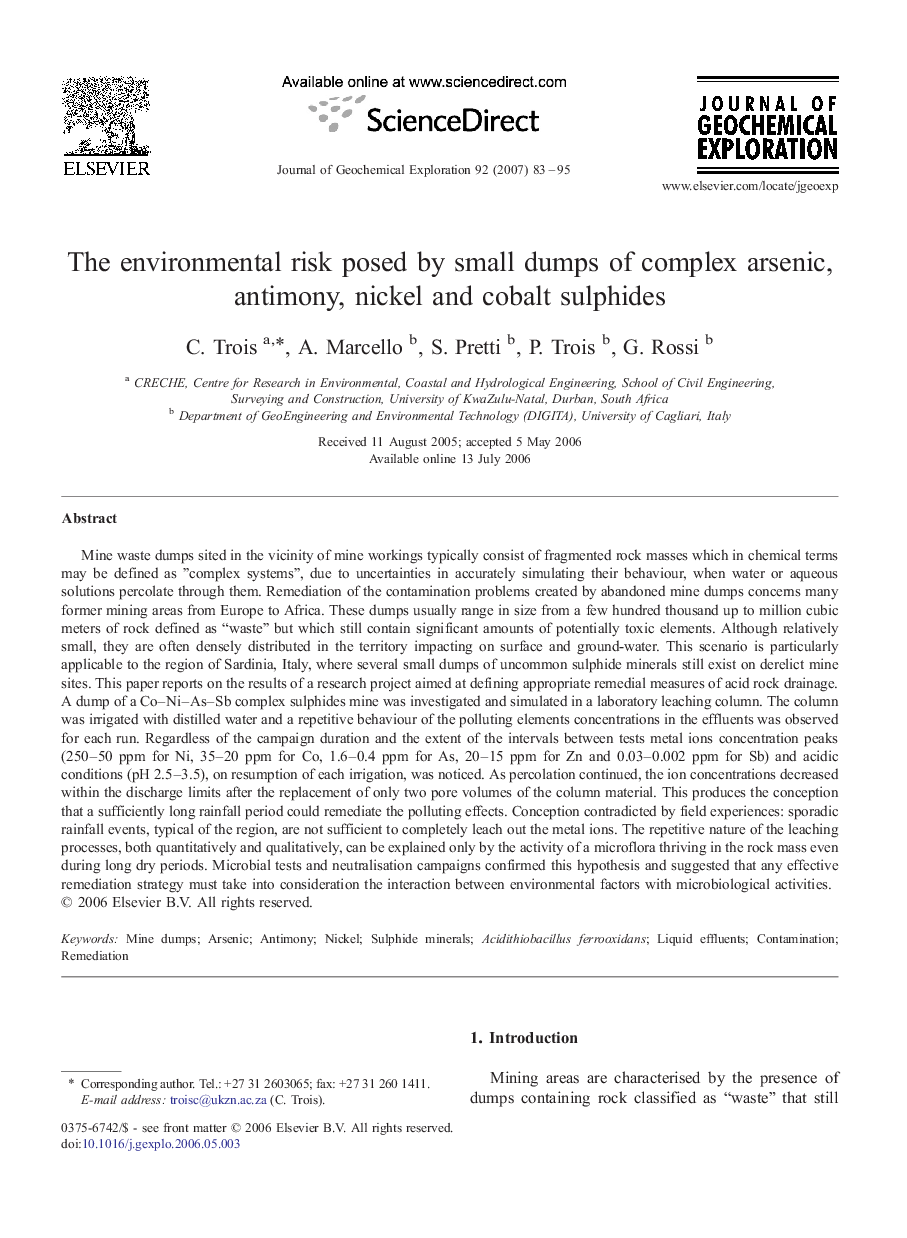| کد مقاله | کد نشریه | سال انتشار | مقاله انگلیسی | نسخه تمام متن |
|---|---|---|---|---|
| 4458321 | 1312668 | 2007 | 13 صفحه PDF | دانلود رایگان |

Mine waste dumps sited in the vicinity of mine workings typically consist of fragmented rock masses which in chemical terms may be defined as "complex systems", due to uncertainties in accurately simulating their behaviour, when water or aqueous solutions percolate through them. Remediation of the contamination problems created by abandoned mine dumps concerns many former mining areas from Europe to Africa. These dumps usually range in size from a few hundred thousand up to million cubic meters of rock defined as “waste” but which still contain significant amounts of potentially toxic elements. Although relatively small, they are often densely distributed in the territory impacting on surface and ground-water. This scenario is particularly applicable to the region of Sardinia, Italy, where several small dumps of uncommon sulphide minerals still exist on derelict mine sites. This paper reports on the results of a research project aimed at defining appropriate remedial measures of acid rock drainage. A dump of a Co–Ni–As–Sb complex sulphides mine was investigated and simulated in a laboratory leaching column. The column was irrigated with distilled water and a repetitive behaviour of the polluting elements concentrations in the effluents was observed for each run. Regardless of the campaign duration and the extent of the intervals between tests metal ions concentration peaks (250–50 ppm for Ni, 35–20 ppm for Co, 1.6–0.4 ppm for As, 20–15 ppm for Zn and 0.03–0.002 ppm for Sb) and acidic conditions (pH 2.5–3.5), on resumption of each irrigation, was noticed. As percolation continued, the ion concentrations decreased within the discharge limits after the replacement of only two pore volumes of the column material. This produces the conception that a sufficiently long rainfall period could remediate the polluting effects. Conception contradicted by field experiences: sporadic rainfall events, typical of the region, are not sufficient to completely leach out the metal ions. The repetitive nature of the leaching processes, both quantitatively and qualitatively, can be explained only by the activity of a microflora thriving in the rock mass even during long dry periods. Microbial tests and neutralisation campaigns confirmed this hypothesis and suggested that any effective remediation strategy must take into consideration the interaction between environmental factors with microbiological activities.
Journal: Journal of Geochemical Exploration - Volume 92, Issue 1, January 2007, Pages 83–95